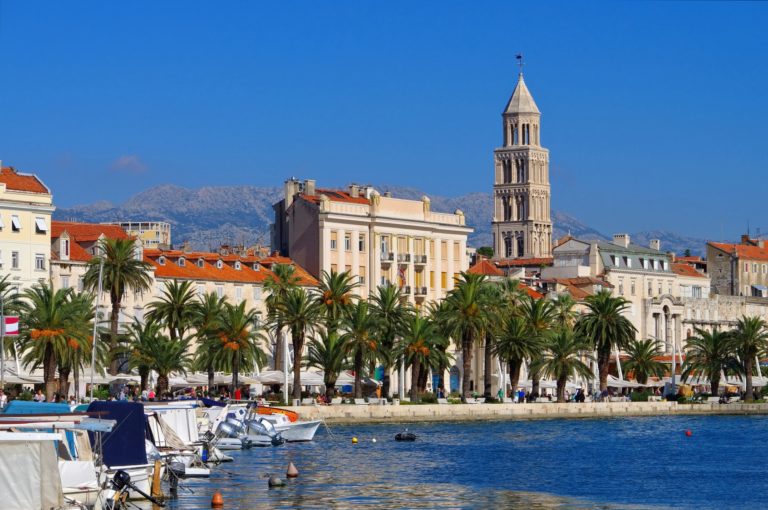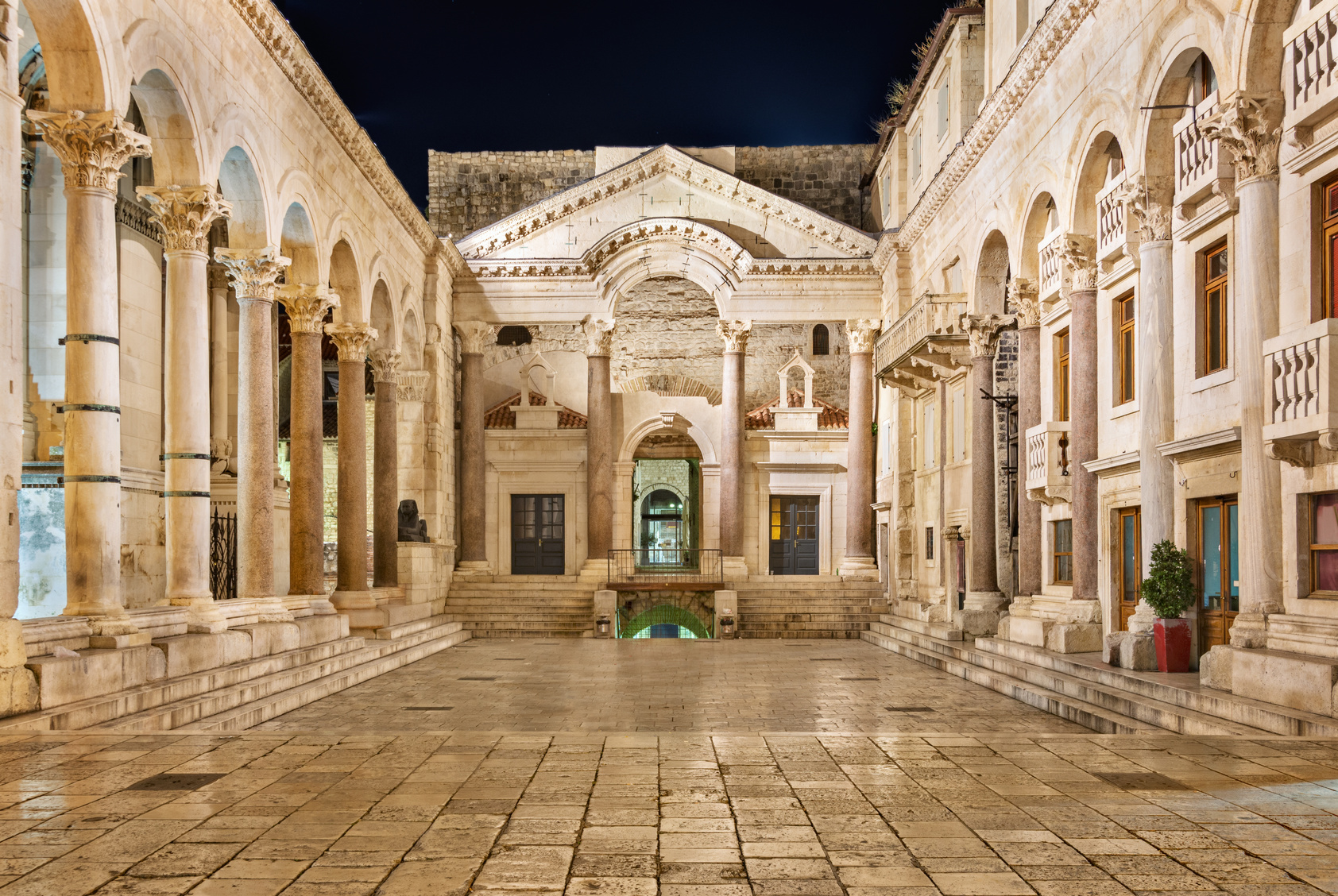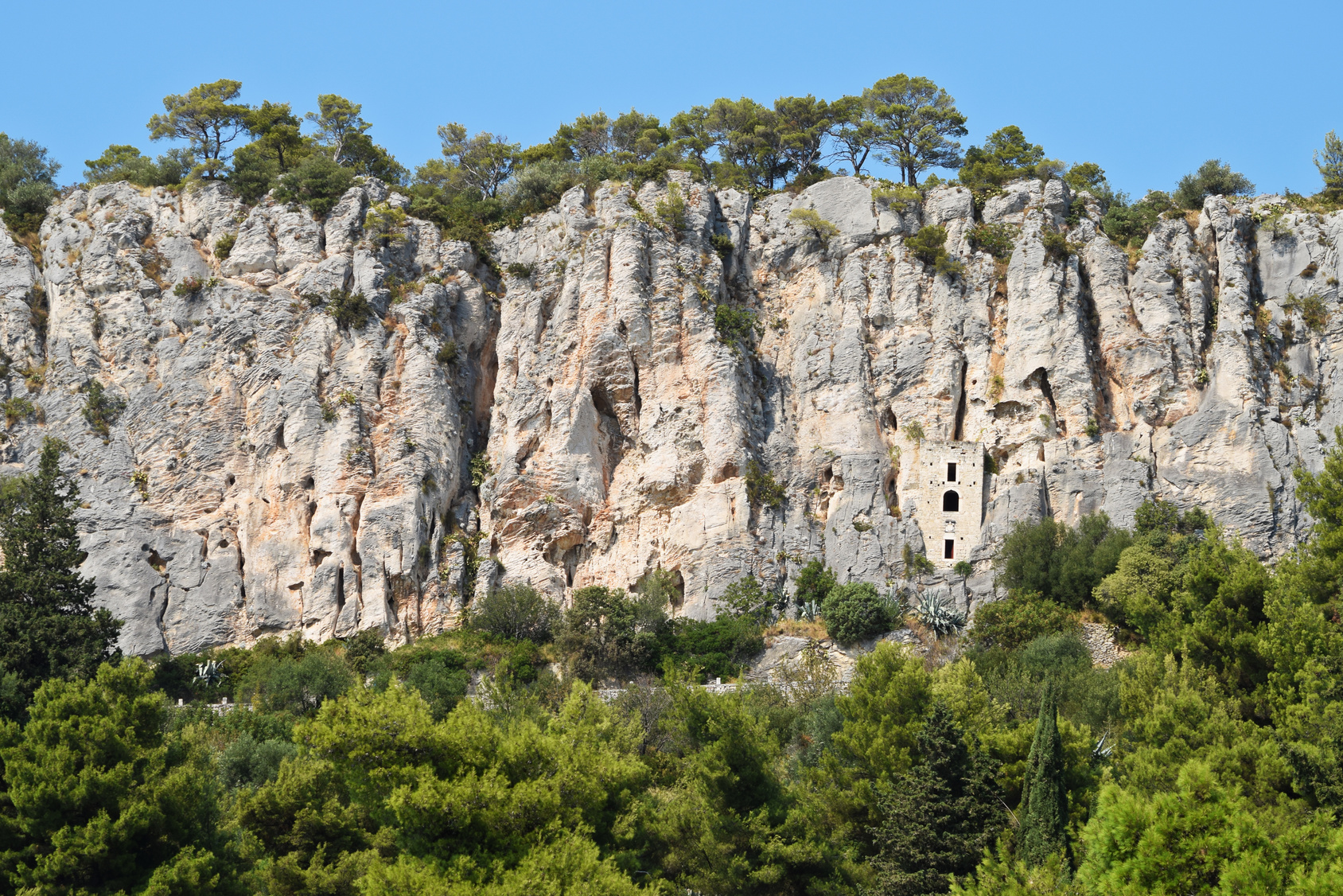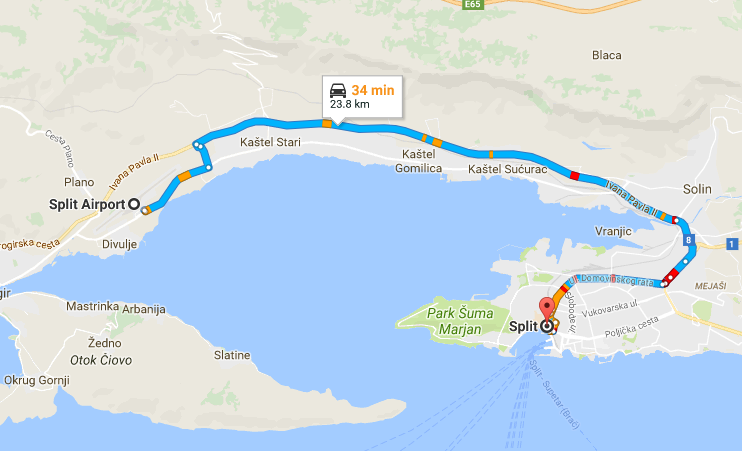The eternal dilemma of any traveller looking for an interesting, authentic experience of somewhere which is already firmly on the tourist trail is how to get the most out of your visit while avoiding crowds of happy-snapping tourists.
Recently, I was faced with just this dilemma when I organised a trip to the historic town of Split on Croatia’s beautiful Dalmatian Coast. The port was an important Greek, and then Roman, settlement with one of the world’s oldest Catholic cathedrals and fascinating Roman buildings. The trouble is, of course, that Split is well and truly on Europe’s busy tourist trail, as it’s a UNESCO World Heritage Site and a major stopping port for local cruises.
Thankfully, I discovered that with a little bit of planning, it was more than possible to see the fascinating sights that the port had to offer without battling with cruise-goers or other tourists. I also found some great restaurants, bars and cafés that were free from visitors and that offered a far more authentic Croatian experience than the more popular venues.
For my alternative guide to exploring Split, read on.
Stopping by Split on a cruise? Check out our detailed guide to the best shore excursions here.
The Diocletian’s Palace
No visit to the Croatian port would be complete without wandering around the Roman Emperor’s Palace, which makes up the Old Town. This area is a UNESCO World Heritage Site, so you can imagine how crowded it gets in the busy summer season. But keep reading, because I certainly discovered the best way to see this beautiful sight.
What is the Diocletian’s Palace?
Built more than two thousand years ago, the Diocletian Palace is literally a city within a city. Constructed on the orders of Gaius Aurelius Valerius Diocletianus in 305 AD, it was actually built by 20,000 Roman slaves, who took nine years to complete it.
When to Visit
Although you’re never going to be lucky enough to have the palace to yourself, I discovered that the ancient buildings are flood-lit at night. If you visit then, it won’t be as crowded, and you’ll get an amazing sense of the Old Town’s scale.
Where to Go
Walk from the famous Bronze Gate, which you’ll find by the waterfront (known locally as the Riva), to the Golden Gate to experience the Old Town’s full splendour. For a fantastic view of the port, climb to the top of the Cathedral Bell Tower.
Street Markets
I always try to search out a local market when I visit a new town or city, as they are a great way of instantly immersing yourself in the local culture.
What Are the Markets Like?
In Split, I found two excellent markets that were a vibrant mishmash of fresh local produce, fish and local arts and crafts. What’s special about these markets is that you can not only savour some excellent local produce, but that you can also buy traditional artwork as a holiday memento.
When to Visit
The markets can get pricey, so whatever time you visit, I would recommend bartering with the stall holders – especially if you’re on a tight budget. The markets open at 7 am and close at 2 pm, but I discovered that the later you go in the afternoon (from 12 pm onwards), the more likely you are to get a good price.
All of the produce that I bought was fantastic, but the trick is to watch which stalls the locals are shopping at – they tend to know where the best food is!
Where to Go
The two best markets are close to the Old Town. The first is Pazar Green Market, which is held daily along the eastern edge of the Diocletian Palace and beside the Silver Gate. The second is the Ribarnica Fish Market. This is a partly covered and partly outdoor daily fish market that takes place daily. It’s a mere six-minute walk from Pazar Green Market, and is perfect for buying fish and enjoying the hustle and bustle of Split.
Marjan Hill
If you want to escape the crowds altogether, head out of town and to the protected park area of Marjan Hill, which is known for its natural beauty, quiet beaches and stunning views.
What is Marjan Hill?
Marjan Hill is a steep-sloped and green park area just outside of town. This scenic spot is popular among locals, who come here to enjoy the hiking and cycle trails and, of course, love to swim in the balmy waters of the Mediterranean.
There are a number of sights to look out for on the many hiking trails, including Park Marjan, St. Jerome Church, the Museum of Croatian Archaeological Monuments and the Mestrovic Gallery.
When to Visit
The best time to visit Marjan Hill is whenever you’ve had enough of Split’s crowds. The area has many bonuses, including its shady areas and its excellent beaches. So why not come here in the middle of the day and avoid the cruise boat tourists swarming through the port?
Where to Go
All you have to do is leave town via Marmont Street and then head west. Before you know it, you’ll find yourself in the protect parkland of Marjan Hill.
Eating Out
Eating in Split during the busy summer period can be pricey, especially if you stick to the tourist routes. However, I discovered that if you wander away from the famous streets and piazzas and opt for the narrow alleyways instead, you will find a wonderful range of local taverns known as konobas. Here you will get delicious local dishes – such as the hearty beef stew pasticada – at incredibly reasonable prices.
How to Get to Split
The port is just 24 kilometres from Split Airport, Croatia’s second largest airport, with a range of international flights offered by budget and premium airlines. The flight from the UK takes around two and a half hours.
The journey from the airport into the city will take you about 35 minutes. To avoid the stress of trying to organise transport at the airport, simply pre-book a private or shared group transfer with Shuttle Direct online.
Where to Stay
Villa Valeria – Learn more about the local way of life in a self-catered apartment or room with a shared kitchen set in the historic Diocletian Palace. The Villa Valeria offers stylish apartments and rooms in a great location for exploring the historic Old Town, and is close to a wide range of cafés, bars and restaurants. What’s more, there’s free WiFi!
Hostel Dvor – Meet other like-minded travellers in the communal Hostel Dvor, which is close to the Old Town. Choose between private rooms – with or without shared bathrooms – or a bed in a dormitory in this friendly hostel with bright, spacious communal areas, a garden, and free WiFi.
About Shuttle Direct:
Whether you’re travelling alone or in a group, an airport transfer with Shuttle Direct, the leading provider of private and group transfers in Europe and North Africa, is a safe, economical way of getting to your holiday destination. Choose between a shared group transfer or a private car. Regardless of what you opt for, an experienced driver will meet you at the airport when you land and drive you straight to your accommodation.








